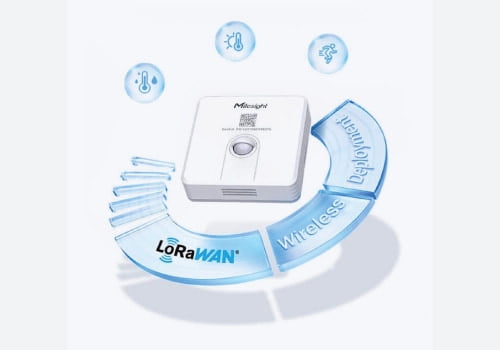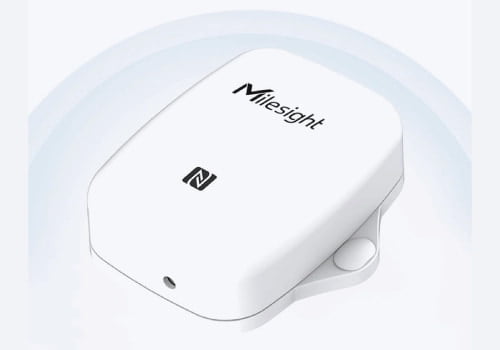A humidity sensor measures moisture fluctuation in the air. These can be placed around your building in sensitive areas that need tracking due to equipment that could be damaged with heightened humidity or temperature changes. Buildings with IT and computers could be at risk from sudden humidity changes, meaning investing in a humidity sensor may save you thousands of pounds if you can correctly anticipate the cause of the humidity change.
There are a range of sensors that can help with monitoring humidity in a given area. For example, Milesight has produced the WS203 three-in-one sensor for motion, temperature, and humidity saves energy and keeps you on top of the goings-on in your building. The high-precision temperature and humidity identification feature ensures rooms maintain a comfortable level of warmth and dryness, able to pick up on changes in real-time. The smart humidity sensor has a wide range to encompass the full breadth of changes, all while operating on ultra-low power consumption – its battery can last five years with proper care.
There are a range of other humidity sensors that will serve you for as variety of purposes. Perhaps to monitor HVAC systems, or weather, industrial processes, and medical devices. These can be affected by humidity in different ways, but with a sensor, you can ensure they work as needed at all times.
Another dual temperature and humidity sensor like the Milesight EM300 boasts high accuracy and a range of up to 15km in rural areas, and 2km in urban areas. Dustproof and waterproof, it is easy to use and consumes very little power, with the ability to monitor changes on your phone through Internet of Things (IoT) technology.
Humidity sensors are often equated with moisture sensors, but these are different devices used for different purposes. The two should not be conflated, as humidity sensors monitor moisture in the air, whereas moisture sensors measure water content in a given substance (such as if you were trying to judge the content of water in a carpet).
Humidity sensors are used in climate control systems – refrigeration, cargo storage, electronics manufacturers, museums, baby incubators, and other hospital applications require a stable humidity level.
Certain types of humidity sensor operate differently. Capacitive sensors use a special material to absorb moisture ad measure the humidity. As the material takes in water from the air, it changes how much electricity it can hold. The sensor detects the change and uses it to figure out how humid the air is.
Resistive humidity sensors work by measuring the change in electrical resistance as moisture is absorbed into a conductive or semi-conductive material. These sensors are smaller and generally more cost-effective but may be more susceptible to contamination over time.
Thermal conductivity sensors compare dry air to humid air and the way each conducts heat. These tend to be used in more specialised or harsh environments where precise humidity measurements are important, such as in high-temperature industrial settings.
Humidity sensors prevent damage to equipment, protect sensitive environments, and ensure comfort for those in the area. Whether you need to monitor an industrial site, manage a climate-controlled environment, or simply regulate the well-being of those occupying a specific space, investing in a reliable humidity sensor will help and save you energy in the process.











